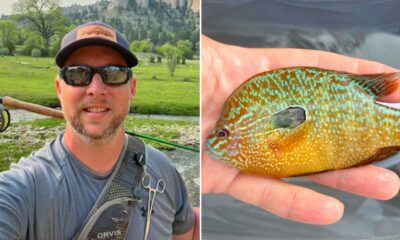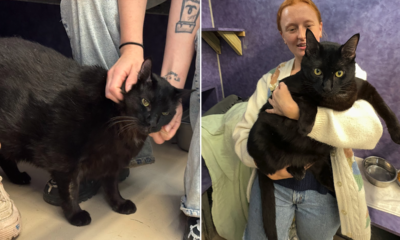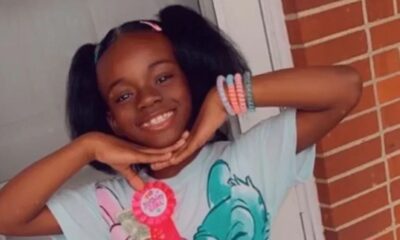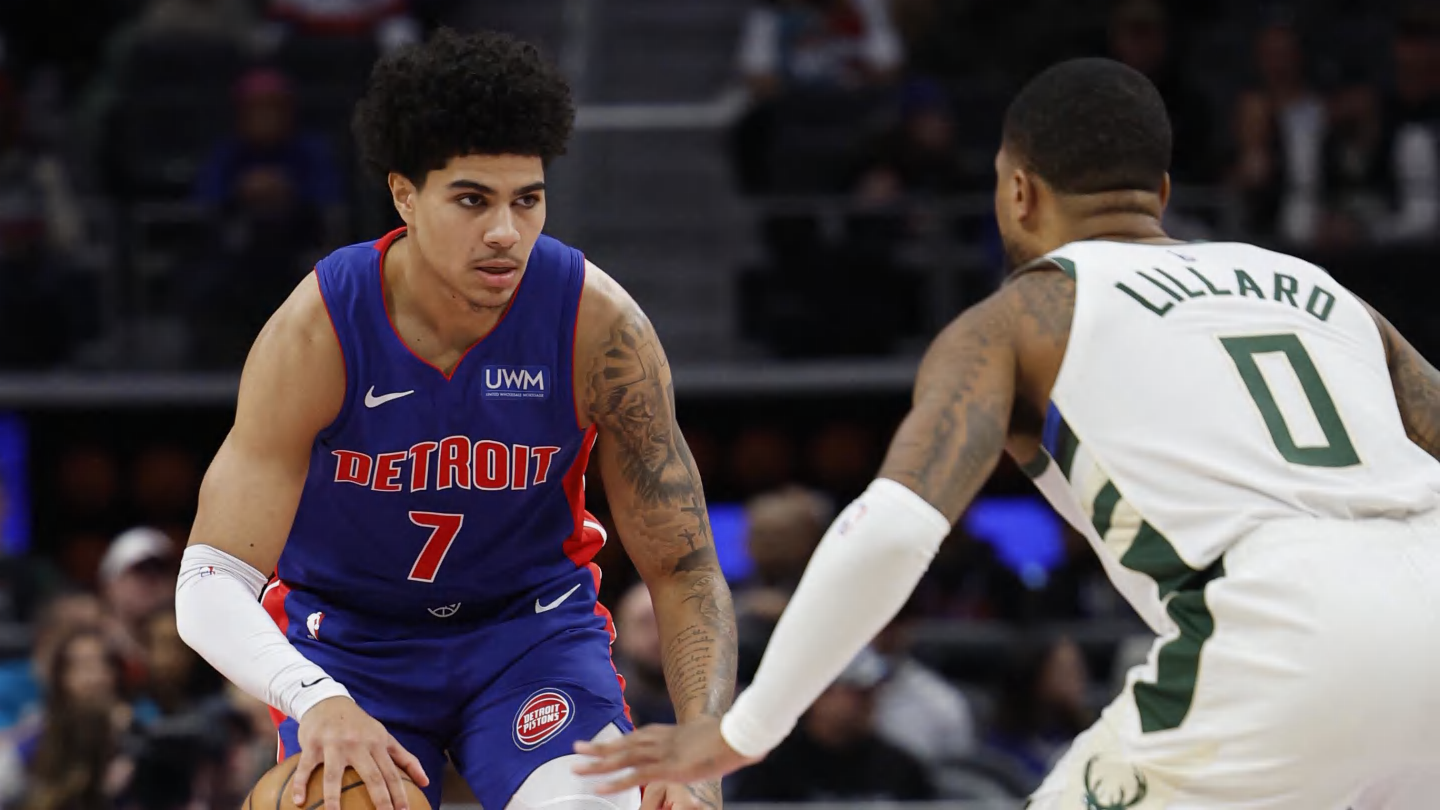Lifestyle
'Prepare to be enthralled': How to see Yosemite's enchanting rainbows that form at night
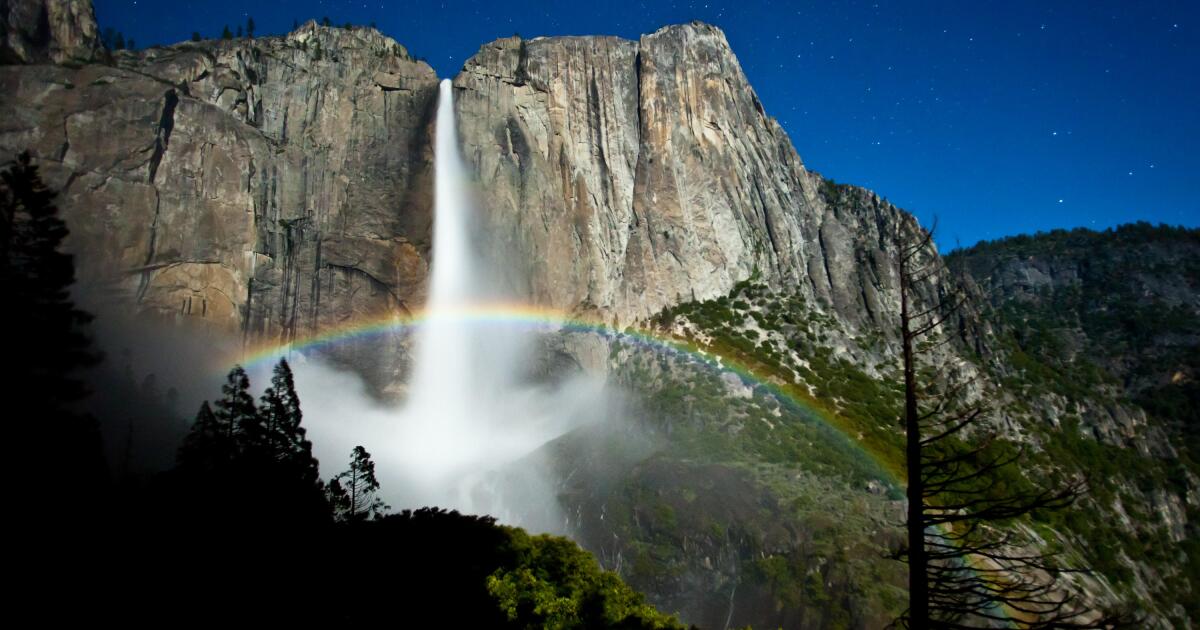
We met Brian Hawkins, a Redondo Beach mechanical engineer-turned-videographer, in the near-empty lobby of the Yosemite Valley Lodge. It was just after 9 on a Tuesday night in late April. Our hunt was about to begin, but the weather augured poorly.
“It’s cloudy, clearing later,” he said. “I would not expect to see anything yet.”
This was no chance meeting. A couple of years before I had discovered Hawkins’ website, where he posts photos, videos and very precise predictions of the phenomenon that had lured us to this place, at exactly this time: moonbows.
Naturalist John Muir called them lunar rainbows, or spraybows, revealed by a full moon’s light. Roaring spring and early summer waterfalls in Yosemite National Park make the central California destination one of the few spots on Earth to see them. The next viewing opportunity is May 21 to 25.
Moonbows haven’t realized the popularity of the park’s firefall each February, but visitors are gaining awareness. As we navigated the paved trail in darkness to Lower Yosemite Fall , we passed clumps of walkers going in the other direction, evidently discouraged by persistent clouds. At the base, some 25 were gathered in small groups, many behind a bend sheltering onlookers from the falls’ jet-loud spray.
Muir described the Yosemite Falls’ roar as “fine, savage music,” and Hawkins spoke movingly of how the falls, especially in the upper stretch, maintained a voice, even a presence. Having seen spectacular photos by him and others, my wife, Mica, and I impatiently waited for the moon to reflect the sun’s light on the falls. As did others.
Brian Hawkins, left, ran into Richard and Sally Brewer and Anne Johnston-Fera of Buffalo, N.Y., looking for moonbows in April at Yosemite’s Cook’s Meadow.
(Alex Pulaski)
One photographer showed me a quarter-moonbow image he had captured 20 minutes before during a cloud break. Another, Eric Krapil, 28, from Laurel, Md., shared a full-arc moonbow photo from the night before, captured on his cellular phone.
“We got lucky,” he said. “Some guy walking past us at the lodge said, ‘Do you want to see a moonbow?’”
We certainly did on this night. And a few minutes later, as the yellowish moon briefly shouldered through the haze, Hawkins pointed to a rock. There, he said, a corner of the moonbow begins.
And I saw it: A quarter arc at best, ghostly white in the moon’s faint light. Not everything I had hoped for, but as we walked back later I thanked Hawkins for helping us see that glimmer — a hint of what might come the following nights.
Yeah, he said. A thoughtful pause ensued.
“That was,” he continued, “the most pathetic moonbow I’ve ever seen.”
Before 2007, nobody was precisely sure when and where moonbows would appear at Yosemite. But a team of researchers from Texas State University harnessed computers to meld topography, geometry and astronomy to accurately predict the moonbows’ appearance and published their findings.
Hawkins first visited the park that same year and became mesmerized by its beauty — particularly after seeing a moonbow in 2011. He started doing his own modeling, and his website debuted in 2018. It’s a labor of love — there are no ads, and he doesn’t do tours or hawk T-shirts.
What he does do is help other seekers. Anna Smits, who lives and works in the Yosemite Valley, saw her first moonbow during the pandemic. The park was closed to visitors, but Hawkins still shared his calculations. Now, Smits — both an avid photographer and outdoorswoman — occasionally pushes the envelope to find more elusive moonbow shots.
What does that entail? One night, that involved setting an anchor and rappelling about 15 feet to a ledge near Upper Yosemite Fall. Another time, she set her alarm for 1:30 a.m. for a hike in bright moonlight to Vernal Fall. It was so cold that the condensed spray solidly froze her tripod.
“It’s such a rewarding experience,” she said. “It really lights me up just thinking about sitting in the spray and watching this moonbow cross in front of you.”
That visual reward eluded us on the subsequent two nights of our visit last month. Daytime blue skies surrendered to clouds at night. Hawkins had warned me that first night that nothing was guaranteed.
“Prepare to be enthralled by the scene before you but also frustrated by how difficult it is to shoot,” he said. “A lot of things are working against you — it’s cold, it’s wet, the lens has to be dried off, you can’t use auto focus. You just have to be patient and work through solving all the problems.”
And when the moon is hidden by a curtain of clouds, you comfort yourself with the memory of the falls’ voice and a glimmer of the show waiting when you return.
What is a moonbow?
Simply put, it’s a rainbow seen at night, produced by the light of a full moon reflecting off droplets of water suspended in the air. But humans struggle to detect color at night, so — as with the northern lights — they usually appear white to the naked eye. Photographs, especially with timed exposures to allow more light, render them in full color, just like a rainbow.
Is Yosemite the only place to see moonbows?
No, but there are very few waterfall sites where they can consistently be seen. They include Cumberland Falls in Kentucky and Africa’s Victoria Falls, at the Zambia-Zimbabwe border.
When are the best dates, times and locations to see Yosemite moonbows?
They are best observed on the five nights around the full moon. Hawkins has calculated peak 2024 viewing dates and specific hours by location (Upper and Lower Yosemite falls and Glacier Point) for the next viewing window of May 21 to 25 at his website. Best dates for the following full moon, with his time calculations to follow later, are June 19 to 23.
Is any special gear needed?
Useful items include comfortable walking shoes, a rain poncho if viewing near a fall’s base, cloths to dry lenses and cameras, a tripod for longer camera or smartphone exposures and a headlamp or flashlight (red-light settings are preferable for not disrupting night vision). Weather apps such as Clear Outside predict hourly cloud cover. For the super-advanced, apps such as Photo Ephemeris and Planit Pro will help precisely calculate moon positions (and much more).
Are Yosemite National Park reservations required?
Sometimes. Until June 30, daytime (5 a.m. to 4 p.m.) park entry reservations are required on weekends and holidays. From July 1 to Aug. 16, they are required daily for the same time periods. Those with in-park camping or lodging reservations will be granted park entry. Full rules and a reservation link can be found at the National Park Service’s website.
Is it risky looking for Yosemite moonbows at night?
We didn’t find it daunting. Lower Yosemite Fall is just a 10-minute walk from Yosemite Valley Lodge, where we stayed. Cook’s Meadow, with its broad view of Yosemite Falls, is also nearby, but we decided to drive, largely because dense cloud cover obscured the moonlight. Both Hawkins and Smits counseled using common sense in seeking more remote locations. It’s worth noting that the intrepid Muir, who never shrank from a challenge, almost died one night while chasing moonbows behind Yosemite Falls near Fern Ledge; he escaped drenched and numb from a “wild bath in moonlit spray.”

Lifestyle
40 years after 'Purple Rain,' Prince’s band remembers how the movie came together

Prince on the custom motorcycle featured in Purple Rain.
Cinematic/Alamy
hide caption
toggle caption
Cinematic/Alamy
Wendy Melvoin, guitarist for Prince’s genre bending band The Revolution, remembers one of their most iconic songs started with an idea — and a challenge — from the boss himself.
Prince broached the topic during a band rehearsal. “He came to the table with this beautiful idea … most of the songs [on the album] had already been done,” says Melvoin, “He said ‘I have this idea and sounds a little like this…whattaya you guys got?’”
What Wendy had was an idea for a mournful cascade of guitar chords that proved the perfect starting point.
“I came up with that intro and that chord progression to get us into the song,” she adds. “And it ended up being one of the most iconic intros to a pop ballad ever.”
The song Purple Rain would become the surprising, anthemic climax for a film of the same name that emerged as one of the most successful and influential musical films in history. The movie hit theaters 40 years ago, breaking barriers in the music world while signaling the ascendancy of Prince as a pop music superstar.
Putting Purple Rain on the silver screen
Filmed around the band’s Minneapolis hometown, Purple Rain had a simple story. Prince’s character — known only as The Kid – is rocked by his dad constantly beating his mother at home, struggling to connect with his bandmembers and a new romantic interest, a beautiful singer named Apollonia.
Drummer Bobby Rivkin, known onstage as Bobby Z, says the idea of showcasing Prince’s songs and The Revolution in a film was inspired by the success of MTV and its focus on music videos.
“Prince was always someone who took a step bigger than the cultural [stuff] that was happening at the times,” he adds. “Once MTV started playing his videos, I think he just gravitated to something bigger and said ‘I’ll just take it to the next level.’’”
Melvoin says she and The Revolution — including Rivkin, keyboardists Lisa Coleman and Matt Fink and bassist Brown Mark — found out they would be working on a movie when Prince announced it in a matter-of-fact way at a rehearsal. But she wasn’t worried about whether she could act or how the band would look onscreen.
“I guess if I had any concern back then, it was just literally, ‘was the story going to be any good?’” she says, laughing. “I didn’t have any doubt the music sequences would be fantastic. But I didn’t have a good sense of whether the narrative of the film was going to work.”

Turns out, it all worked pretty well. Purple Rain was a hit, with the film and its soundtrack earning an Oscar, two Grammy awards and status as a groundbreaking musical film.
It also introduced a film audience to Prince’s scorching performance style, his unerring ability to craft hit tunes, and his distinctive fashion sense. Prince’s network of bands and performers also got some attention – including the girl-fronted group Apollonia 6 and the funk band The Time.
The Time lead singer Morris Day and his onstage foil Jerome Benton became the film’s comic center, with the two riffing on a version of Abbott and Costello’s classic routine “Who’s on First?”.
“Honestly, we weren’t trying to be funny … we always clowned around at the time because we were young,” Day says, responding to questions via email. He noted, even though the cast took acting and dance classes in preparation for filming, “we were just being ourselves. If anything, I was more conscious of being cool than funny.”

Morris Day of The Time performs in Chicago in 1983, before Purple Rain came out.
Raymond Boyd/Getty Images
hide caption
toggle caption
Raymond Boyd/Getty Images
He’s not surprised people are still talking about the film four decades after its initial release.
“The film was groundbreaking on so many levels … it was the first of its kind,” adds Day, who says he’s only watched the film in its entirety one time, at its Hollywood premiere on July 26, 1984. “It somehow reminds people of a special period in their lives during the ‘80s, which is a period we all at times wish we could reclaim.”
Building the drama in Purple Rain
Fans know the film tells a more combative story behind the genesis of the song Purple Rain.
Onscreen, Melvoin and her then-girlfriend, keyboardist Lisa Coleman write the song, fighting a reluctant Prince – known only as The Kid in the movie – to let The Revolution play it onstage.

“Everytime we give you a song, you say you’re going to use it, but you never do,” Melvoin shouts at Prince during the scene, delivering some of the best acting from the musicians who mostly fill out the cast. “You think we’re doing something behind your back…you’re just being paranoid as usual.”
When Prince finally agrees to play Purple Rain onstage at the Minneapolis club First Avenue – launching into an emotional rendition topped by one of the best guitar solos in pop music – he wows the crowd and saves the band. But Melvoin says now that the friction they acted out was “movie magic” conjured to build a story; in real life, she, Lisa and Prince were very close collaborators.

Prince, alongside Wendy Melvoin (left) and Lisa Coleman (right) accepts Purple Rain‘s Oscar for best original score in 1985.
HARMS/AFP via Getty
hide caption
toggle caption
HARMS/AFP via Getty
Powered by hits like the title track and the percolating dance jam I Would Die 4 U, Purple Rain burst like a lavender-tinged explosion across the pop culture landscape – launching Prince’s growing fame into the stratosphere.
The innovative dance hit When Doves Cry, recorded by Prince with no bass guitar, became his first Number One single on Billboard’s Hot 100 singles list. That was followed by his second Number One single, the rock and soul classic Let’s Go Crazy, which showcased his guitar skills at a time when rock guitar wasn’t heard often on R&B records.
Giving fans a peek behind the mystique
Prince had developed a mystique by rarely talking to the press. So, in the days before YouTube and Tik Tok, Purple Rain offered a sustained – if fictionalized – look at the inner workings of the band and his origin story for fans eager to know more.


And it centered a group of performers who were a mix of identities and ethnicities in the Midwest, making music that crossed all kinds of cultural barriers, at a time when people like that were rarely seen on the silver screen.
“That film was Prince’s version of social media,” Melvoin says. “This is funk rock and nobody’s seen a movie based on this kind of life. It [was] a trip for people to see.”
But there were also criticisms. Many of the film’s performers were amateurs, which showed in their performances. And female characters were often treated badly on screen: in one scene, Jerome Benton gets rid of a hostile woman confronting Day by tossing her into a dumpster.
“Given today’s culture, I’m certain there are moments in the film that ruffle a few feathers,” Day says. “Overall, I would like to think we did something great. And based on the overwhelming majority [of public reaction], I believe we did.”
The film ultimately proved the perfect showcase for Prince’s expansive creativity – from his ruffled shirts and big shouldered clothes to his mix of religion and sexuality in lyrics, innovative ways of recording and his seemingly endless supply of high-quality songs.

Bobby Rivkin, otherwise known as Bobby Z, during a recording session in 1989.
Jim Steinfeldt/Michael Ochs Archives/Getty Images
hide caption
toggle caption
Jim Steinfeldt/Michael Ochs Archives/Getty Images
“MTV opened the door a little bit — just a teeny crack of light — and he would kick it open,” Rivkin adds. “He was innovative in fashion and culture. And it was a remarkable time for him. From humble beginnings to control [of] black culture, crossover culture … rock, funk, pop … He was on fire for quite a while.”
Continuing on without the boss
A couple of years and albums later, Prince disbanded The Revolution. But the group has reunited a few times – notably for a benefit concert after Rivkin had his first heart attack in 2010 – and after Prince died in 2016, at age 57 from an accidental fentanyl overdose. More recently, the group came together last month to perform during a five-day event in Minneapolis celebrating Purple Rain’s 40th anniversary.
Both Melvoin and Rivkin say they hope The Revolution can play more shows commemorating Purple Rain’s anniversary over the next year. But they also admit it can be challenging performing without their dynamic leader and frontman, even as playing together helps them process the loss.
“After he passed, it’s the only thing that we could think of to do — to be together and grieve,” Melvoin says.
And what would The Kid himself think about the legacy of his blockbuster film and album? Day says he’s not sure.
“[Prince] never liked staying in the past,” the singer adds. “He was always evolving. Once Purple Rain was done, he was on to the next. But now that I’m thinking about it, he might have thrown a big celebration at Paisley Park for the fans. Probably would have been one hell of a jam session.”
Lifestyle
Josh Flagg Says Ben Affleck Might Be In Escrow For New Home In Brentwood

TMZ.com
Josh Flagg says Ben Affleck might actually be putting down roots in Brentwood as opposed to it being a pit stop … telling us he’s heard the guy might be quietly buying a pad there.
We got the ‘Million Dollar Listing’ star at the Plaza Hotel in New York City — and our photog asked him about Ben and Jennifer Lopez publicly listing their Beverly Hills mansion for $68 million … and what the implications for that might be big picture.

Remember … Ben and Jen only just bought the place in 2023, and Josh says the quick flip here makes it look like they are getting divorced … something we’ve been reporting is going to happen for a while now.
We broke the story … Ben and J Lo were quietly trying to sell the estate off-market — but it clearly didn’t work out, and now they’ve going public with the house sale.
TMZ.com
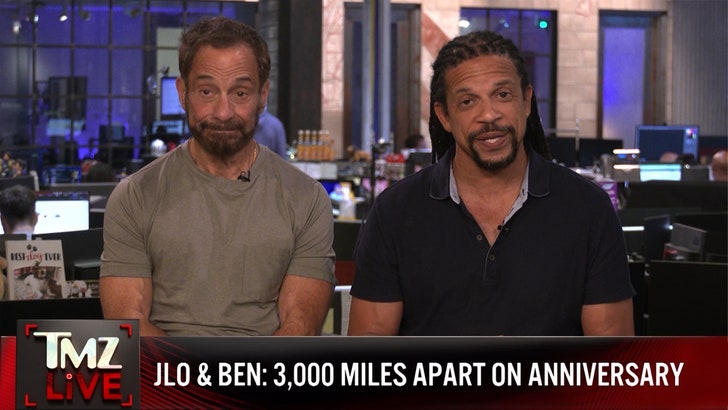
As you know … Ben’s been staying in a Brentwood rental since moving out of the marital Bev Hills mansion, and J Lo’s been spending a lot of time on her own too … first in Europe, and then more recently in New York to celebrate her birthday week.

TMZ Studios
But, get this … Josh says he recently heard Ben was quietly in escrow on something in Brentwood … so BA may not be renting anymore after all — at least that’s what JF’s floating.
As for the Bev Hills mansion — which Ben and Jen paid over $60 million for — Josh explains why Bennifer might not be taking a huge financial hit … although, they definitely ain’t gonna be turning a profit either.
Interesting stuff all around … especially that tidbit about Ben, if it turns out to be right.
Lifestyle
'Wait Wait' for July 27, 2024: With Not My Job guest Kathleen Hanna

Kathleen Hanna of The Julie Ruin performs onstage at the 2016 Panorama NYC Festival – Day 2 at Randall’s Island on July 23, 2016 in New York City. (Photo by Nicholas Hunt/Getty Images)
Nicholas Hunt/Getty Images/Getty Images North America
hide caption
toggle caption
Nicholas Hunt/Getty Images/Getty Images North America
This week’s show was recorded in Chicago with host Peter Sagal, judge and scorekeeper Bill Kurtis, Not My Job guest Kathleen Hanna and panelists Meredith Scardino, Peter Grosz, and Mo Rocca Click the audio link above to hear the whole show.
Who’s Bill This Time
Momala Takes Over; Assigned Seats Are Back; And The Heat Is On
The Olympic Torch Reporch
Our Summer Olympics Preview
Bluff The Listener
Our panelists tell three stories about someone committing an office faux pas, only one of which is true.
Not My Job: We quiz Bikini Kill’s Kathleen Hanna on Hanna-Barbera
Punk icon Kathleen Hanna plays our game called, “Kathleen Hanna Meet Hannah-Barbera.” Three questions about the animation studio.
Panel Questions
Hide Your Receipts; VR Meets ER; Avocado Apologies
Limericks
Bill Kurtis reads three news-related limericks: Situation Room Cocktails; Burrito Bird; Hopped Up Sharks
Lightning Fill In The Blank
All the news we couldn’t fit anywhere else
Predictions
Our panelists predict what will be the big story out of the Paris Olympic Games
-

 World1 week ago
World1 week agoOne dead after car crashes into restaurant in Paris
-

 Midwest1 week ago
Midwest1 week agoMichigan rep posts video response to Stephen Colbert's joke about his RNC speech: 'Touché'
-

 News1 week ago
News1 week agoVideo: Young Republicans on Why Their Party Isn’t Reaching Gen Z (And What They Can Do About It)
-

 Movie Reviews1 week ago
Movie Reviews1 week agoMovie Review: A new generation drives into the storm in rousing ‘Twisters’
-

 Politics1 week ago
Politics1 week agoFox News Politics: The Call is Coming from Inside the House
-

 News1 week ago
News1 week agoVideo: J.D. Vance Accepts Vice-Presidential Nomination
-

 World1 week ago
World1 week agoTrump to take RNC stage for first speech since assassination attempt
-

 News1 week ago
News1 week agoRNC speakers want to separate the president from the person to show softer side of Trump
